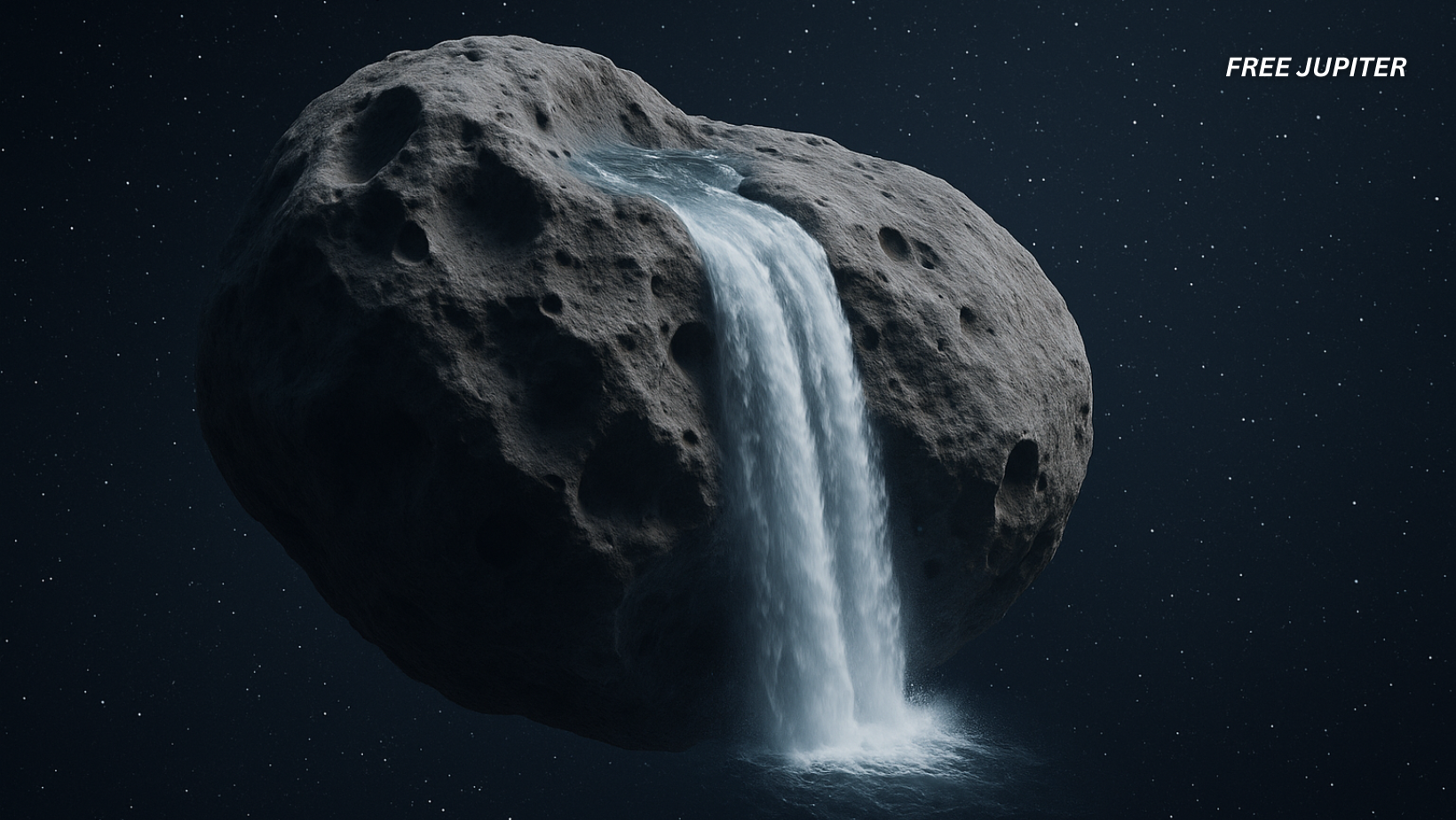Asteroids are usually pictured as dry, lifeless rocks drifting through space. Ryugu, a half-mile-wide asteroid near Earth, certainly looks that way today. But new research suggests it may have once held liquid water, flowing through its rocky body billions of years ago. What makes this discovery surprising is the timing—scientists thought water activity ended early in the solar system’s history. Ryugu seems to prove otherwise.
If true, this changes the story of how Earth got its water. Instead of only relying on comets or water trapped in minerals, soggy asteroids like Ryugu may have helped deliver significant amounts of H₂O much later than expected. That means our oceans might be linked to space rocks that carried liquid water for billions of years before crashing into Earth.
Why Water on an Asteroid Matters
Water is life’s most important ingredient, and figuring out how it arrived on Earth is one of science’s biggest puzzles. Some theories suggest comets brought it here, while others point to carbon-rich asteroids as the main source. Ryugu’s story gives new weight to the asteroid theory, showing that these rocks may have carried water much longer than anyone realized.
If asteroids like Ryugu really kept their water for billions of years, Earth could have received its oceans in multiple deliveries, not just in its earliest days. It also raises questions about other planets and moons—if asteroids supplied Earth with water, maybe they did the same elsewhere in the solar system.
Read more: Asteroid ‘Bennu’ Contains Dust That Is Older Than the Solar System, NASA Finds
A Quick Tour Back in Time
Billions of years ago, the Sun was surrounded by a swirling disk of gas and dust called the protoplanetary disk. From this chaos, planets formed, while leftover material became asteroids. Many of these asteroids formed near the “frost line,” a boundary where temperatures were cold enough for water to freeze into ice.
Until recently, scientists believed liquid water could only exist on asteroids in those earliest, heat-filled moments after formation. Once that heat faded, any remaining water should have frozen or evaporated into space. Ryugu challenges that idea by showing liquid water may have appeared much later.
Enter Ryugu and the Hayabusa2 Mission
Japan’s Hayabusa2 spacecraft changed everything when it collected samples from Ryugu in 2018 and 2019. These tiny pieces of rock came back to Earth and gave scientists a chance to study the asteroid up close. Using isotopes—natural “clocks” that track the age of rocks—researchers found results that didn’t make sense. The samples seemed older than the solar system itself.
This odd result suggested something had interfered with the isotope clocks. The best explanation? Flowing water had washed through the rock, resetting the timers. That means Ryugu, or the larger body it once came from, had liquid water about a billion years after forming.
How Could Ryugu Have Melted Its Ice?
The big mystery is what melted Ryugu’s ice in the first place. The Sun’s warmth isn’t strong enough to reach deep inside an asteroid. Scientists think a collision may be the answer. If another object smashed into Ryugu, the impact could have generated enough heat to melt its ice, creating brief episodes of flowing water.
This would mean Ryugu’s history wasn’t just about drifting quietly in space—it may have been shaped by violent impacts. These cosmic accidents may have unlocked hidden water reserves, changing how long asteroids could remain “wet.”
Why This Changes the Big Picture
If asteroids could hold water for so long, Earth’s oceans might have been filled by more than just early collisions. Instead, water-rich asteroids could have kept delivering liquid water over a billion-year window. That expands the timeline for how our planet became a watery world.
This has implications beyond Earth too. Mars once had rivers and lakes, and icy moons like Europa are believed to hide vast oceans. Understanding Ryugu’s watery past could reveal how common water delivery was across the solar system.
Read more: NASA Is Capturing a $10 Quintillion Asteroid—But It Could Have Devastating Consequences
Subtopic: Asteroids as Cosmic Delivery Trucks
Scientists have long suspected that asteroids acted as “delivery trucks,” carrying water and organic materials across space. Meteorites that land on Earth sometimes contain hydrated minerals, proving that their parent bodies once hosted water. Ryugu’s story adds to this evidence, but with the twist that water may have lasted far longer than expected.
Other missions support this idea. NASA’s OSIRIS-REx spacecraft recently returned samples from asteroid Bennu, another carbon-rich rock. Early results show signs of water-related minerals there too, suggesting that Ryugu isn’t unique. Together, these asteroids tell a story of water traveling far and wide through the solar system.
Subtopic: What This Means for Life Beyond Earth
Finding water on asteroids doesn’t mean life existed there, but it adds a piece to the puzzle. Life needs water, carbon, and the right conditions. Ryugu’s samples have already revealed amino acids, which are the building blocks of proteins. Combine that with water, and you have the raw recipe for life—though not life itself.
This discovery strengthens the idea that the ingredients for life may be more common than once believed. If asteroids can carry both water and organics for billions of years, then the seeds of life may have been scattered across the solar system, waiting for the right place to grow.
Read more: Scientists Warn That ‘Invisible’ Asteroids Could Be Heading for Earth
A New Chapter in the Water Story
Ryugu’s watery past doesn’t answer every question—it raises new ones. What exactly triggered the thaw? How much water did it hold? And how many other asteroids followed the same path? Scientists are just beginning to piece it together.
What’s clear is that the story of water in our solar system is more complex than we thought. Instead of a short-lived event, water may have lingered inside asteroids for billions of years, shaping the destinies of planets, moons, and perhaps even life itself.
Ryugu’s tale isn’t just about one asteroid’s watery secret—it’s about us too. The oceans that cover most of our planet, the rivers that carved valleys, and even the water in our own bodies may trace their origins to these cosmic wanderers. By studying them, we’re not only uncovering how Earth became a blue planet but also gaining clues about where else in the universe life might have a chance to bloom. In the end, every droplet of water connects us to a much larger cosmic story—one that began long before Earth existed and continues to ripple through the solar system today.
Featured image: GPT-5o Rendering.
Friendly Note: FreeJupiter.com shares general information for curious minds. Please fact-check all claims and double-check health info with a qualified professional. 🌱










